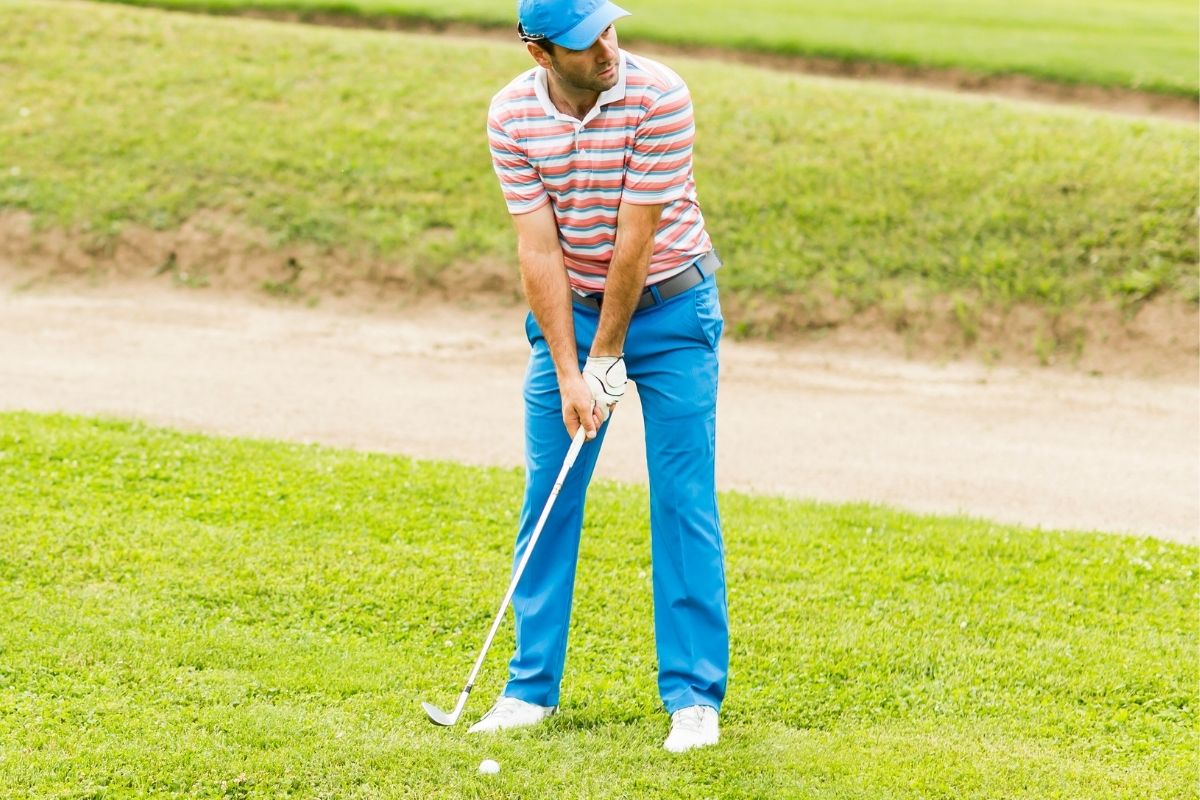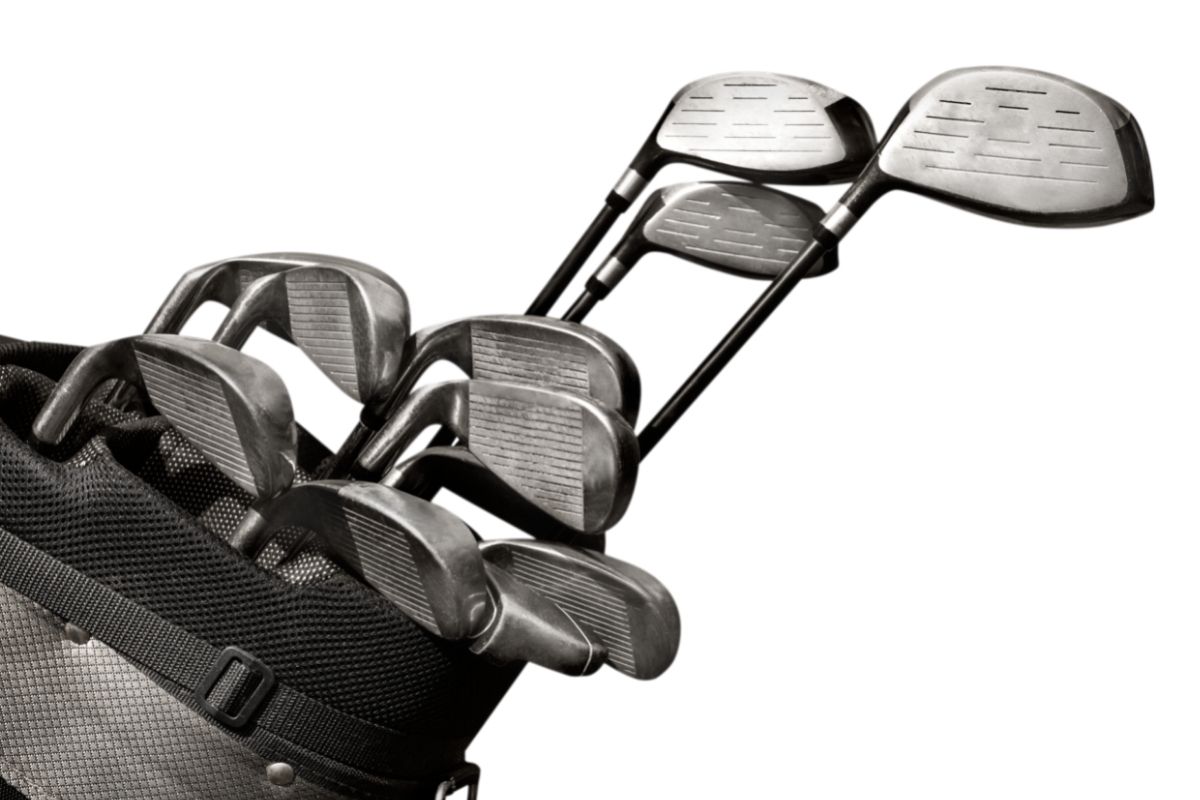We occasionally recommend products we love and might be paid a share of the sale.
Do you already know how to play golf? A golfer must take the time to become familiar with the rules and basics of the game, just like any other game.
Regardless of whether you are a golf beginner or an expert, learning the basics of how to hit a golf ball is very important.

It may be a bit challenging for a total newbie, but with enough practice, you will eventually learn to coordinate all the techniques since they have equal weight and importance.
Would you like to improve your swing? The following article will help you learn the basics of golf.
The Basics Of Hitting A Golf Ball
You need to familiarize yourself with some golfing fundamentals before you start hitting golf balls.
- The stance is how your legs and feet position as you get ready to hit a golf ball. Since the stance forms the basis and foundation of the whole swing, the backswing and the whole movement depend on it.
- Address – You proceed to address the golf ball after taking a stance, the right posture, and properly gripping the golf club. Touch the ground right behind the golf ball with your club head.
- Grounding the club is the situation where your club is on the ground as you address the ball.
- Target is the direction towards which you are planning to hit a golf ball
- The fairway is the part of the course that has short grass, usually between the green and the tee.
- The green is the place with the hole and is also known as putting green.
Get The Right Stance
The stance is the foundation of every swing, and if you get it wrong, the entire swing might fail.
While most golfers take quite some time to perfect their stance, getting it right should be very straightforward. But some take a lifetime.
The standard stance for drivers is parallel to the target line, with the feet slightly wider than the shoulders. It’s like shoulder-width apart with irons, which is about two inches narrower than the driver stance.
The closer you get to the hole, the narrower your stance should be; therefore, your feet should be narrower than your shoulders.
As you swing, your lead foot should point slightly towards the direction of your swing to increase your hip rotation. Your trail foot is the foot away from your target, and it is usually perpendicular to your target line.
Appropriate Posture
The base of any swing will always be your stance. Begin by setting your feet and bending your knees a bit to rest your weight on them.
Then, start swinging your club at your hips until it touches the ground, holding it at the front. When backswinging, ensure that your spine is diagonal to the ground. This will allow you to get a full shoulder and turn your hips.
Tilt your body slightly away from the target line so that you feel as though you’re leaning away from it. You might not get it right now, but that shouldn’t bother you.
Due to the huge number of angles to master and coordinate accurately, it is very typical to take a while to learn. Practice makes perfect!
Get A Perfect Grip
You have only one direct connection with your club, and that goes for the ball as well. Many golfers begin with a neutral grip, where one places the lead hand near the top of the golf club.
About half an inch should separate your palm from the butt of your golf club. Be sure that the club runs diagonally through your fingers when you grip it. Make sure you can also see two or more knuckles on the lead hand.
Let’s place the trail hand above the lead hand so that its palm rests on top of the left thumb. Ensure that the thumb and index finger of the trail hand are pointing directly to the sternum.
Prepare To Address The Ball
When you have the above basics down, you can address your golf ball. The way you address your golf ball depends on the type of club you are using.
For longer golf clubs, your hands should be aligned with the club while the ball is further up the stance and closer to your lead foot.
Tip shorter clubs towards the target by tilting the handle and shaft. As a result, your posture, stance, and final address will differ depending on which club you have.

Swinging Step 1- The Takeaway
A backswing begins with the takeaway, which is usually 12 to 18 inches long.
Whether you make a good swing depends on your takeaway. Move the club away from the golf ball by using your arms and shoulders. Straighten your arms and begin to hinge your wrists.
Step 2- The BackSwing
Backswings continue the takeaway’s backward movement. As you move your body back, resist the temptation to bend the lead arm.
Make the backswing by bending your lead knee at the ball, turning your hips a bit, and shifting your body weight to the trail foot. Most golfers want their heads in line with their bodies during the backswing.
Step 3- The Downswing
Gravity dictates that anything that goes up must at some point come down. When the backswing reaches its maximum height, you’re on your way to the downswing, which is the fastest swing component.
The speed of a ball determines how fast it travels and how far it goes. In a downswing, you are usually unwinding your backswing in a reverse motion.
As you shift your weight to the lead foot, turn your hips towards the target, which is followed by your shoulders and arms.
Step 4- The Follow-Through
Even if you hit the ball already, you must follow through. At the end of the swing, your hips should face your target, and your club should be swung up and beyond the lead shoulder.
Just the tip of your trail foot should be in contact with the ground, while your lead foot should bear your weight. You should be able to balance that for at least 10 seconds.
Types Of Golf Swings
Golf swings need to cover various golf shots, and the basic technique for each swing are mostly the same, with some minor tweaks here and there.
- Drive is hitting the golf ball off the tee using a driver. The driver is the longest golf club, and it travels the furthest. A golfer’s aim when using a driver is to get the ball as far as possible. Although precision is crucial, the main objective is the distance the ball covers.
- The putt is the close shot on the green, and it is nearest to the whole. Good putting requires a great deal of finesse and an adept understanding of slopes surrounding the green, as they affect the ball’s movement toward the hole.
- Chip shots are shortenings of full swings, and it is usually the only point where your swing varies significantly.
- Although it sounds negative, the flop shot is a shot around the green from the rough. The shot goes a bit high but travels a short distance.
- Punch- a punch is helpful when it is windy, since you maintain the ball to the ground and make your shot under the overhanging branch.
In Summary
We hope this article has helped you understand the process of hitting a golf ball. Now, all you have to do is practice and get that elusive hole in one!
- Funny Golf Terms - February 21, 2023
- How To Play Vegas Golf Game - February 16, 2023
- How To Play Wolf Golf Game - February 16, 2023








